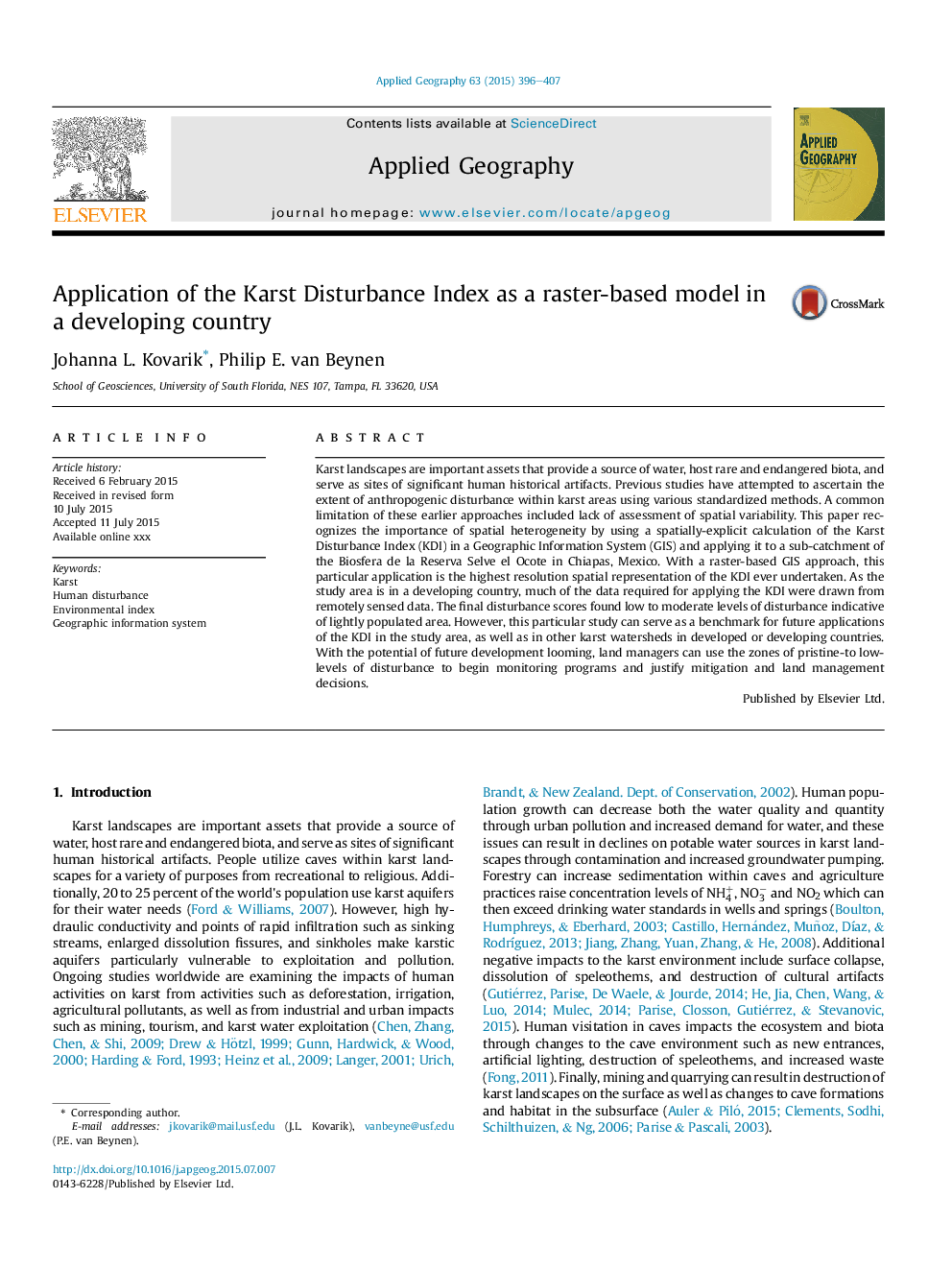| Article ID | Journal | Published Year | Pages | File Type |
|---|---|---|---|---|
| 6538484 | Applied Geography | 2015 | 12 Pages |
Abstract
Karst landscapes are important assets that provide a source of water, host rare and endangered biota, and serve as sites of significant human historical artifacts. Previous studies have attempted to ascertain the extent of anthropogenic disturbance within karst areas using various standardized methods. A common limitation of these earlier approaches included lack of assessment of spatial variability. This paper recognizes the importance of spatial heterogeneity by using a spatially-explicit calculation of the Karst Disturbance Index (KDI) in a Geographic Information System (GIS) and applying it to a sub-catchment of the Biosfera de la Reserva Selve el Ocote in Chiapas, Mexico. With a raster-based GIS approach, this particular application is the highest resolution spatial representation of the KDI ever undertaken. As the study area is in a developing country, much of the data required for applying the KDI were drawn from remotely sensed data. The final disturbance scores found low to moderate levels of disturbance indicative of lightly populated area. However, this particular study can serve as a benchmark for future applications of the KDI in the study area, as well as in other karst watersheds in developed or developing countries. With the potential of future development looming, land managers can use the zones of pristine-to low-levels of disturbance to begin monitoring programs and justify mitigation and land management decisions.
Related Topics
Life Sciences
Agricultural and Biological Sciences
Forestry
Authors
Johanna L. Kovarik, Philip E. van Beynen,
